High-quality content is the lifeblood of every digital marketing strategy. Blog posts, emails, ebooks, and social media posts – marketers and website owners strive to create and publish top-notch content. It is an integral part of your inbound marketing efforts.
The quality of your content has a direct impact on your website’s search engine rankings. In addition, well-researched and insightful content reinforces brand credibility. It helps you win the trust of your audience and turn them into loyal brand advocates.
However, the process of content creation can be extremely painstaking and complicated. It requires a thorough understanding of your target audience and your marketing objectives.
Based on this information, you can address important points such as the length and type of content you should publish. You can also use tools such as Surfer to determine the ideal length of your posts based on the length of the top-ranking posts for similar keywords.
What’s more?
One of the most potent dilemmas faced by content creators is the debate over short-form and long-form content.
Long-form content is crucial for improving search engine rankings and building credibility. However, owing to the dwindling attention span of audiences, short-form content might seem like a more intelligent choice.
Before we address the ongoing battle of short-form vs. long-form posts, let us understand each type in greater detail.
Table of Contents
Long-Form Content: Understanding the Concept
There are no precise definitions for long-form and short-form content.
However, most content creators and digital marketers agree that long-form posts usually contain 2000 words or more. It includes blog posts, whitepapers, ebooks, and tutorials or how-to guides.
Long-form posts give you ample scope to include meaningful insights and analyses, along with the latest statistics and data. They are more demanding in terms of time and resources.
Long-form posts are found to work in the following situations when:
- Your audience is in the early stages of buyers’ journey and has little knowledge of your products or services.
- You are selling high-end and expensive products or services. Your potential customers need extensive information about such products or services in order to make their decisions.
- Or your products or services require more commitment in terms of time and resources from the buyer.
- Your brand is relatively new or you are launching a new product or service. Long-form content allows you to give extensive details about your offering and how it can be valuable to your audience.
- You are selling a technical product and would like to explain its specs in detail.
- Your goal is to close B2B sales that involve a long and complex purchasing cycle.
Long-Form Content: The Advantages
It is evident that long-form content works in situations when you want to give in-depth information to your audience. It can influence purchase decisions by acquainting new prospects with your products and services.
The next step of our long-form or short-form content comparison is to address the benefits offered by the latter.
Keyword Rich Content
There was a time when you could improve your search engine rankings by stuffing keywords into a thin 500-word article.
However, with the introduction of Google RankBrain, such malicious strategies are no longer useful. In fact, search engine algorithms are constantly being updated in order to reward original, meaningful, useful content.
Long-form content allows you to incorporate your keywords into your content in a seamless manner. This increases the keyword density of your content and in turn, leads to increased organic traffic from search engines.
However, it’s crucial to find the right keywords for making the most out of your content. For this, you need a reliable keyword research tool, and I recommend using Semrush.
Once you enter the base keyword, the tool will come up with a list of relevant keywords that you can choose from. It also shows you the search volume and keyword difficulty to help you figure out which one is the best for you.
What’s more?
Semrush also offers the Keyword Gap tool. Using this, you can find out where you stand compared to your competitors. It shows you the keywords your competitors are ranking for, but you aren’t. Based on those results, you can target those keywords and go after your competition too.
Increased Backlinks
If your content is well-researched and contains useful data, statistics, or infographics, it will attract backlinks from other websites.
In addition to increasing website traffic further, this also strengthens your inbound link profile. Armed with the right type of content, you can even attract backlinks from high-authority websites in your niche.
But are there any other ways through which you can build backlinks?
To build backlinks, I recommend using Semrush. All you need to do is enter your target keywords, and the tool fetches a list of websites that you can reach out to for link building.
From those, you can choose the ones you wish to target and get in touch to get quality backlinks for your website.
Improved Search Engine Ranking
Search engines such as Google constantly strive to deliver the best experience to their users. As a result, they have a penchant for websites that offer detailed, meaningful, and valuable content.
In fact, Google’s Panda algorithm update was introduced to reward websites with high-quality content.
Keyword-rich content and a powerful inbound link profile contribute directly to your website’s search engine rankings. It tells search engines bots that you are here to deliver value to your audience.
Moreover, when your website attracts high-quality backlinks, search engine bots also perceive you as an authority figure in your industry.
As a result, your website’s search engine rankings improve and you experience a surge in organic search traffic.
So, how can you create high-quality content?
Coming up with stellar content regularly is a challenge. You need to get your grammar and writing style right every time.
To make this process simpler, you can use ProWritingAid. This tool not only points out your grammatical errors but also looks for style errors so that you can improve your content quickly.
What’s more, you ask?
It also makes the process of discovering new words easy so that you can grow your vocabulary and convey your message with ease through your content.
Better Website Performance
If you publish well-researched and engaging long-form content, your audience is likely to spend more time on your website. This, in turn, improves website parameters such as bounce rate and time on site.
Moreover, long-form content allows for efficient interlinking among different blog posts on your website. As a result, you can keep your readers hooked to your website for a longer time. This goes a long way to improve the bounce rate even further.
But how can you figure out the impact of your long-form content on website performance?
I recommend using Semrush for tracking your website growth and driving your SEO efforts. It helps you track the rankings of your keywords. Through this, you can figure out what content is driving traffic to your website.
Additionally, it gives you traffic analytics through which you can identify your average bounce rate, visitor count, and even the time on site.
Enhanced Credibility and Retention
It takes a significant investment in terms of time, resources, and capital to write a 2000-word long in-depth and well-researched blog post. This effort and investment are evident to your audience as well.
Long-form content positions you as a brand that cares for your audience and wants to add value to their lives. This, in turn, helps you earn the trust of your audience and reinforces brand credibility.
Publishing meaningful long-form content consistently also keeps your audience hooked. This can help you boost customer loyalty and retain existing customers.
Less Competition
Creating and publishing long-form content is an extremely strenuous process. You need highly skilled content creators to ensure that the content is engaging and meaningful. Moreover, it takes time to develop such content.
This often acts as a deterrent and discourages many marketers from considering long-form content. You can outperform your competitors by using this to your advantage.
Long-form content helps you cut through the noise and catch the attention of your potential customers.
Increased Authority
When you publish detailed and insightful content, you are perceived as an industry expert. Doing this on a regular basis establishes your authority in certain subject matters in your niche.
Your audience starts seeing you as a valuable and trusted source of meaningful information.
More Social Shares
AppSumo’s Noah Kagan collaborated with the BuzzSumo team to analyze the social share counts of 100 million articles.
The study revealed that in the battle of long-form or short-form content, the latter gets more social shares. In fact, blog posts with a length between 3,000 and 10,000-words got the maximum number of social shares.
Image via OkDork
This figure is not surprising considering that when you read something of value you’ll be tempted to share it. Thus, long-form content has the potential to become viral.
This, in turn, can increase website traffic and elevate your brand awareness to greater heights.
Better Scannability
Long-form content allows you to incorporate plenty of subheadings, infographics, bulleted lists, and images.
This aids scannability and allows a reader to quickly glance through your blog posts to find what they are looking for.
But why is it necessary?
It is extremely useful and can help keep your audience engaged even when they don’t have the time to read an entire piece.
Increased Conversions
The ultimate objective of your digital marketing strategy is to convert website visitors and blog readers into paying customers.
What’s more, you ask?
Long-form content is particularly useful in this regard as it boosts brand credibility and trust. It also positions you as an authority figure in your industry.
Moreover, long-form content allows you to provide your audience with all the necessary information about your product or service. This, in turn, is helpful in persuading them to make a purchase.
Efficient Repurposing
When you create a piece of long-form content, it becomes easier for you to repurpose it into different forms.
For instance, you can create an attractive infographic to summarize an elaborate whitepaper. Likewise, you can transform an ebook into a series of YouTube podcasts.
Long-Form Content: The Disadvantages
In the battle of short-form vs long-form content, the latter offers a number of lucrative benefits. However, it fails to emerge as a clear winner due to a few shortcomings.
Expensive and Time-consuming
Creating an engaging 2000-word long blog post is not a cakewalk. It demands a thorough understanding of the topic. Moreover, the content has to be well-researched and properly structured.
Thus, it requires a significant amount of time and resources. If you are not adept enough to create such content, you have to outsource it to an expert or agency. This requires you to spend a lot of money, thus making long-form content quite expensive.
Decreasing Attention Span
Today’s fast-paced lifestyle has largely contributed to the decrease in our attention spans. Your audience is constantly busy and has a lot on their minds while going through your website.
Unless your blog posts are extremely engaging and well-structured, they will fail to grab the attention of your target audience.
Inconsistency
Publishing a mind-blowing 3,000-word article is a great way to improve audience engagement. However, it isn’t of much use when you deliver such content once in a blue moon.
It is important that you publish content on a regular basis in order to stay alive in the memory of your audience.
As discussed previously, creating long-form content is a time-consuming process. Thus, you may not be able to publish regularly. This inconsistency can be detrimental to the success of your content strategy.
Less Mobile-Friendly
Even if your blog and website are mobile-responsive, long-form content may not attract many mobile device users. A smaller screen size coupled with reduced attention span makes it difficult for people to read lengthy blog posts on their phones.
Instead of reading it right away, they might bookmark it and end up forgetting about it altogether.
It is evident that long-form content is extremely beneficial for establishing brand credibility and improving search engine ranking.
However, creating such content on a regular basis requires a huge investment in terms of time and money. Thus, digital marketers can’t always rely on it.
This complicates the debate of short-form or long-form content even further.
Now, let's take a look at short-form content in greater detail and see how it helps you overcome the drawbacks of long-form content.
Short-Form Content: Understanding the Concept
Short-form content is characterized by a word count of 1200 or less. It includes emails, short blogs posts, and social media posts (such as captions for images and videos).
It is often useful in conveying crucial information in a crisp and concise format.
Short-form content is typically useful in situations when:
- Your audience is already familiar with your brand and your products or services. Such people are looking for precise information that will help them make a purchase. You wouldn’t want to waste their time and yours by providing unnecessary details.
- You are selling relatively inexpensive and commonly used products or services. Such products or services often benefit from a to-the-point description instead of a lengthy one.
- You are interacting with your existing customers or qualified leads. If they are ready to purchase from you, they already know what sets your brand apart from your competitors. It is likely that they are looking for specific information related to a product or service.
- You are writing copy for specific formats such as PPC campaigns, Facebook Ads, and email subject lines.
Short-Form Content: The Advantages
Short-form content is the go-to option for many established marketers and brands. For instance, marketing guru, Seth Godin often writes blog posts that are less than 600-words long. Yet, his articles are extremely engaging and often get a large number of social shares.
Now, let's take a look at the benefits of short-form content.
Improved Readership
Owing to their short attention spans, your audience may not be reading every word of a lengthy blog post. Instead, they scan through it to find relevant and useful information.
Short-form content, on the other hand, ensures that your audience actually reads the entire piece. This leads to increased audience engagement. It is particularly useful when you want to communicate important information about your brand.
Less Time-Consuming
One of the leading arguments in favor of short-form content is that it requires less time to create and publish. This puts it at the forefront whenever there is a discourse on short-form vs long-form content.
You can publish multiple social media posts or short blog posts in the same amount of time that is required to create one 3000-word blog post. It also requires less investment in terms of resources.
Consistency
This is perhaps the biggest advantage of short-form content. You can use it actively engage with your audience on a regular basis.
Since it is less time-consuming to create short-form content, you can publish at a greater frequency.
But, why is it necessary?
Consistency is one of the pillars of every content strategy. It creates a sense of anticipation among your readers and social media audience. You can use a mix of short blog articles and social media posts to keep your audience hooked.
Mobile-Friendly
Short-form content is mobile-friendly because of its precision and length. It is easier to read a concise 800-word blog post on your phone than a 5000-word ebook.
Thus, keeping your content short ensures that your audience actually reads it on their mobile phone, instead of saving it for later.
But, why is it important?
Smartphones are fast replacing desktops and laptops. In fact, mobile phones accounted for 52.2% of global internet traffic in 2018. Therefore, it is imperative that you focus on creating short-form content in order to engage your audience.
Image via Statista
Increased Shareability
Noah Kagan’s study suggests that long-form content gets more social shares than short-form content.
However, it doesn’t consider the fact that it takes much longer to write a 3000-word blog post than a 1000-word one. In fact, you could probably finish writing two or three 1000-word articles in the same amount of time required for a 3000-word post.
Together, such short articles can outperform one long blog post in terms of social shares. Take a look at the screenshot below:
Image via Search Engine Journal
Better Engagement
You can use crisp and to-the-point social media posts to grab the attention of your audience. It is likely that they will read such posts in their entirety and may even share them in their own profiles.
This leads to improved engagement levels and takes your content to a far wider audience.
Short-Form Content: The Disadvantages
This discussion on short-form vs long-form content becomes more baffling when you consider that each type offers unique advantages. It is extremely difficult to pick one over the other.
Now, let's take a look at the drawbacks of short-form content.
Lack of Depth
Short-form content prohibits you from explaining a topic in great detail. This is particularly difficult when you are writing about a topic that requires statistics and examples.
A lack of deep insights often makes your content appear superficial and less valuable.
So, what are it’s repercussions?
Your audience may perceive such blog posts as low-quality content. This is especially true when they are at a stage in the sales funnel where they need more information about your brand.
Thus, short-form content can be detrimental to brand credibility and trust.
Poor Website Performance
When your audience doesn’t get any meaningful information from your website, they are less likely to spend time on it. This decreases the average time on site and leads to poor bounce rates.
Not Search Friendly
The biggest disadvantage of short-form content is that it rarely contributes to an improvement in search engine rankings.
This is because it doesn’t establish your authority over important subjects in your niche. In addition, the restrictive-word count prohibits you from making your content keyword rich.
Moreover, it is difficult to repurpose short-form content for other channels. It also doesn’t establish you as an industry expert.
As a result, you may find it difficult to win your readers’ trust using short-form content alone.
Short-Form vs Long-Form Content: The Real Dilemma
We have evaluated the benefits and drawbacks of both short-form and long-form content. However, it is still difficult to declare a winner in the battle of long-form vs short-form content.
This is because each type of content complements the other one.
If your content strategy focuses solely on long blog posts, ebooks, and whitepapers, it will be difficult to sustain your audience’s attention.
Likewise, focusing on short-form content alone can have a negative impact on your brand credibility and search engine ranking.
Therefore, in order to choose between short-form and long-form content, you need to consider the following factors:
- Target audience – Do you want to connect with tech-savvy college students who spend most of their time on Instagram and social media? Or do you want to attract top-level decision makers in your industry?
- You can only determine the ideal length of your content once you have a thorough understanding of your target audience. Apart from basic demographics such as age, gender, likes, and dislikes, you should also learn about their academic and professional background.
- Marketing objective – The choice of long-form vs short-form content depends on the final objective of your marketing strategy. If your goal is to increase brand awareness through social media, short-form content may be the ideal choice. On the other hand, if you want your content to convert readers into paying customer, detailed blog posts are more suitable.
- User Intent and journey – You must understand why and how a user has landed up on your website or blog. This helps you determine the ideal content length and type for different types of users.
Short-Form vs Long-Form Content: Understanding the Buyer’s Journey
The dilemma of long-form vs short-form content can be resolved by taking a closer look at the buyers’ journey. You need to understand where your audience members are located in the sales funnel.
People in the awareness stage of the buyers’ journey need more convincing before they even consider purchasing from your brand. Long blog posts, ebooks, and tutorials are ideal in such cases.
On the other hand, qualified leads in the decision stage of the buyers’ journey need a slight nudge before they can make up their mind.
A targeted email that outlines the benefits of your new product might just be what they need in order to decide.
FAQs
Q1. What is long-form content?
A. Long-form content is content that provides in-depth information about any given topic. While markets may disagree on the lower limit, usually, anything over 1000 words is considered long-form content. There is no upper limit as long-form content can be extremely long as well.
Q2. What is considered short-form content?
A. It is a type of easy-to-digest content that covers a topic in brief, while highlighting only the key points. Usually, anything less than 1000 words is considered short-form content.
Q3. Short-form or long-form content: Which is better?
A. Both have their own pros and cons. Long-form content is more informative and often ranks higher than short-form content. However, people don’t always have the time to read long-form content and often bounce off without reading. So, in terms of audience engagement short-form content is better as it is quick and easy to read.
Q4. What is your technique for writing long-form blogs?
A. There are two main aspects to consider when writing long-form content. First, it should cover the topic at length and should have all the relevant information about it. Second, it should not be difficult to read and have appropriate headings, subheadings, and sections.
Another trick to make your long-form content scannable is to add all the important points as subheadings. So, someone who just wants quick information can just go through your table of contents or headings and subheadings to find what they are looking for.
Q5. Short-form vs. long-form content: Which do I use?
A. Both types of content are used for different purposes. Long-form content is good to educate and inform your audience on important industry topics. Short-form content is great for driving engagement and giving frequent updates. Ideally, you should use a mix of both as part of your content strategy.
Q6. How long is a long-form video?
A. Again, different experts may have different opinions about this, but, in general, anything over ten minutes can be considered as a long video. Such videos usually have a content arc with a clear start, middle, and end.
Short-Form vs Long-Form Content: What’s the Final Verdict?
The battle of long-form vs short-form content has been baffling marketers and website owners. What complicates the debate even further is the fact that there isn’t a clear winner.
While long-form content improves search engine rankings and brand credibility, short-form content is mobile-friendly and consistent.
The choice of long-form vs short-form content largely depends on where your target audience is located in the sales funnel.
It requires a deep understanding of your target audience and the end goal of your marketing campaign.
The battle of short-form vs long-form content is a never-ending one. Do you agree? Share your views in the comments section below.

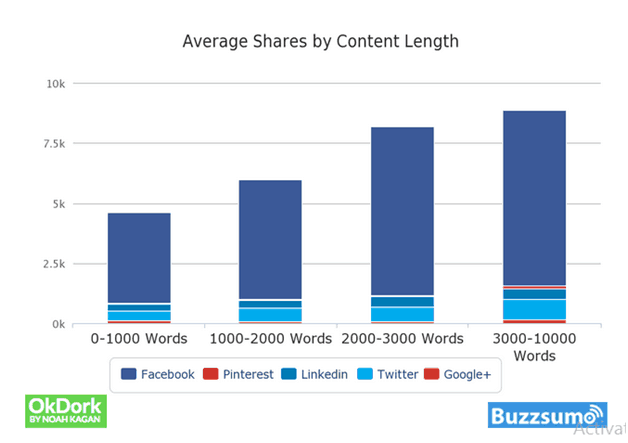
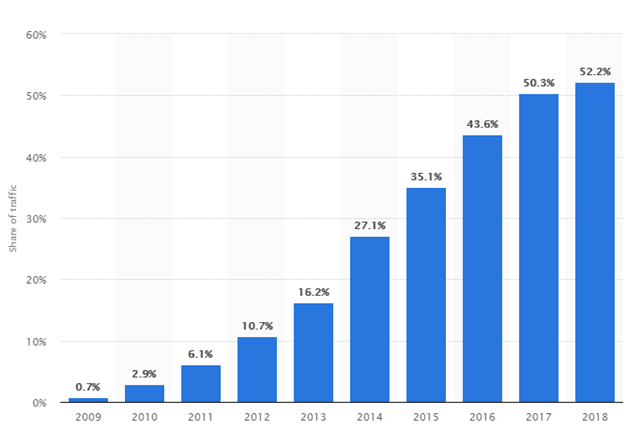
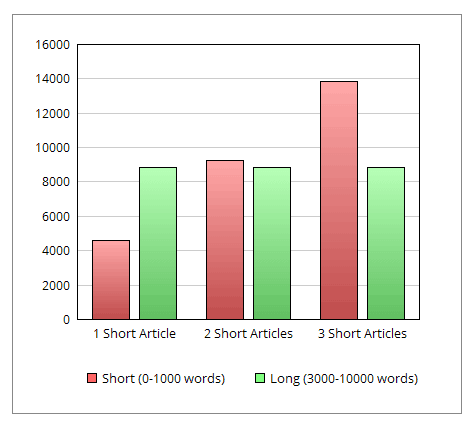
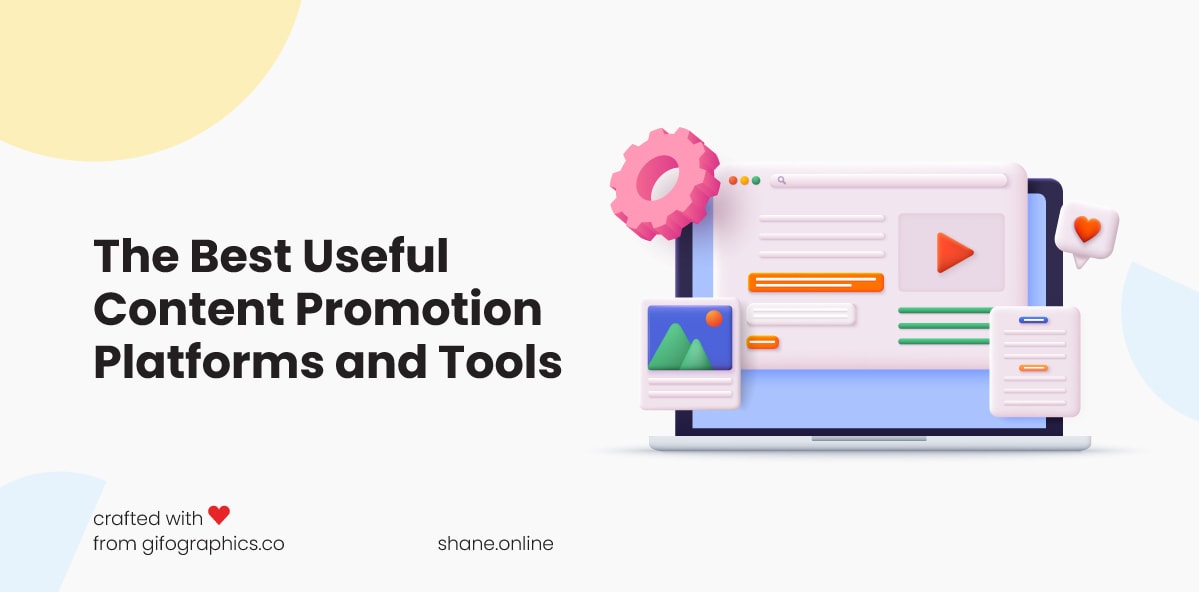
![21 awesome ecommerce content marketing examples for [year] 8 21 awesome ecommerce content marketing examples](https://shanebarker.com/wp-content/uploads/2021/12/100_-21-Awesome-Ecommerce-Content-Marketing-Examples.jpg)
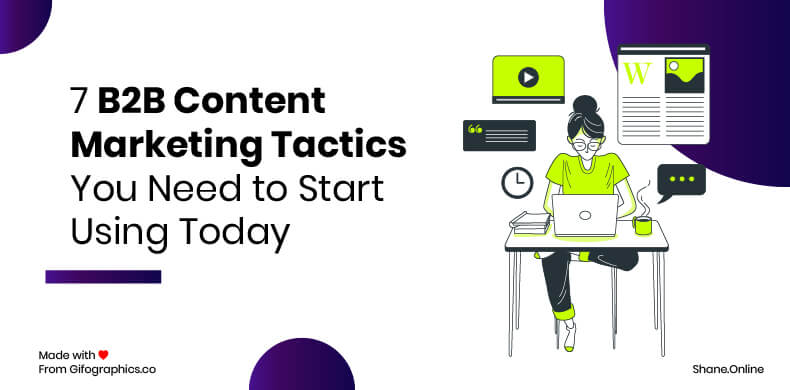
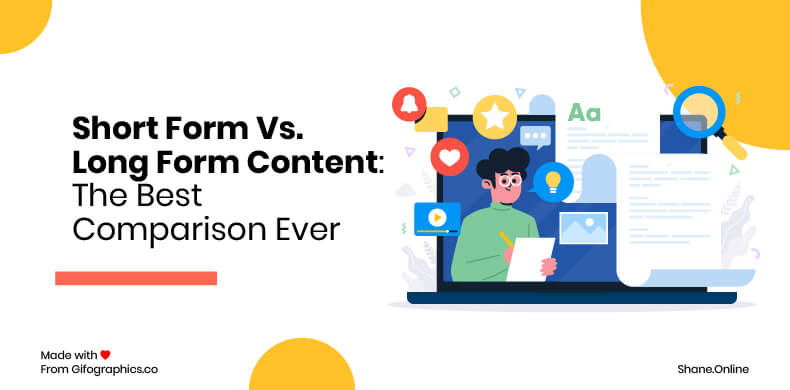







I appreciate you taking the time and effort to put this article together. Thank you!
Thank you so much! I’m so happy that you enjoyed reading my article on short-form vs long-form content.